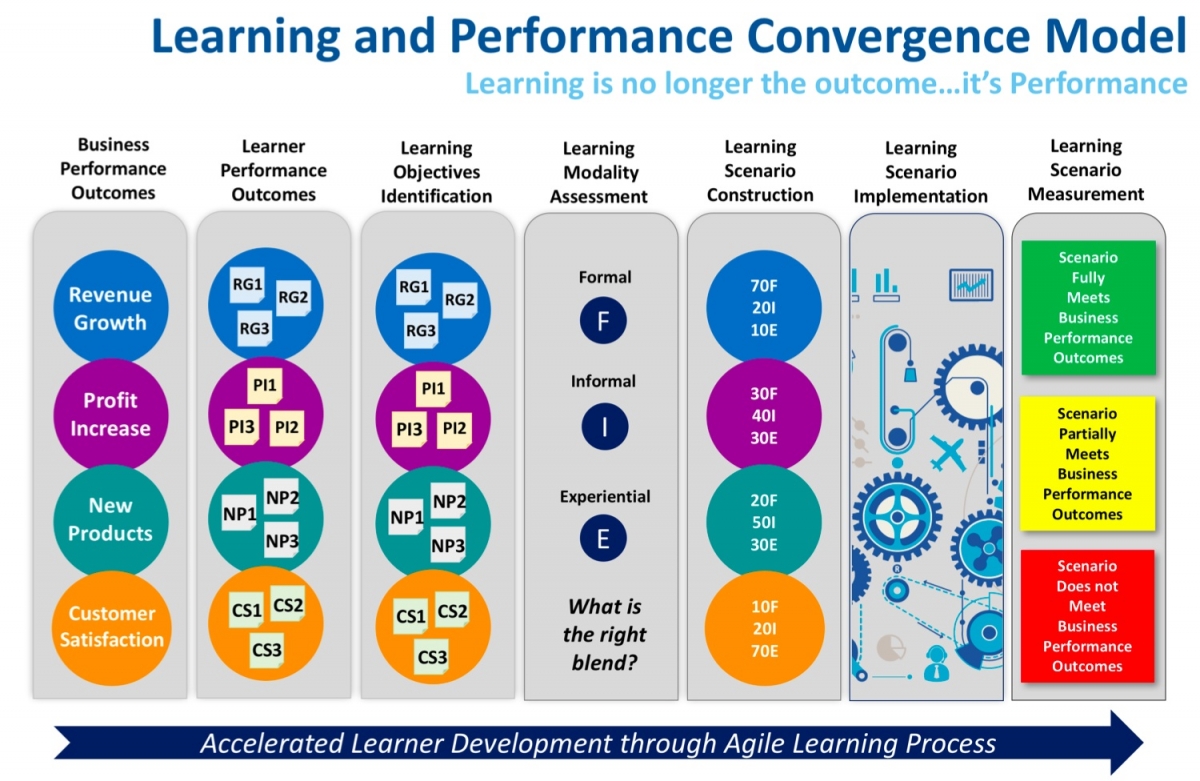HOW TO DEVELOP TRULY BLENDED LEARNING
Organizations have been talking about delivering a blended learning experience for years. Until recently, however, “blended” typically meant some mix of classroom training and e-learning. Within the greater context of how people learn, this mix isn’t truly blended at all. It is 100 percent focused on delivering formal learning experiences.
Now, organizations finally are beginning to come to grips with the fact that formal learning represents a relatively small percentage of how people learn. The most common principle cited is the 70:20:10 model, which states that people acquire knowledge in this ratio: 70 percent experiential, 20 percent informal, and 10 percent formal.
he Learning-Performance Convergence Model
Unshackled from traditional formal learning and strict adherence to a 20-year-old model, organizations are poised to deliver learning that is focused on behaviors and performance. In traditional learning models, success is measured in completions, grades, and smile sheets.
A fluid, blended approach to learning is focused on specific outcomes aimed at changing how people work and improve the business. To that end, Brandon Hall Group has developed The Learning-Performance Convergence Model, which shows how the three elements of the 70:20:10 model can be used in variable ways to connect learning to performance.
The model is based on the results of multiple studies conducted by Brandon Hall Group, as well as engagements with leading-edge companies, solution providers, and thought leaders.

The Bottom Line
Using the Learning-Performance Convergence Model accomplishes several things:
- The model draws a direct connection between learning and performance. It forces organizations to stop looking at learning as an insulated function, for which the only goal is the completion of learning.
- The model makes companies look at all their learning—even formal learning—through an agile lens. The process laid out is iterative, meaning it can and should be adjusted over time to meet shifting needs or respond to changing variables.
- By focusing on performance outcomes from the outset, the model helps organizations solve their measurement problems. So much of learning measurement has been inward facing because there simply was no connection to performance. Now companies can map learning initiatives to learning, individual, and organizational outcomes.


